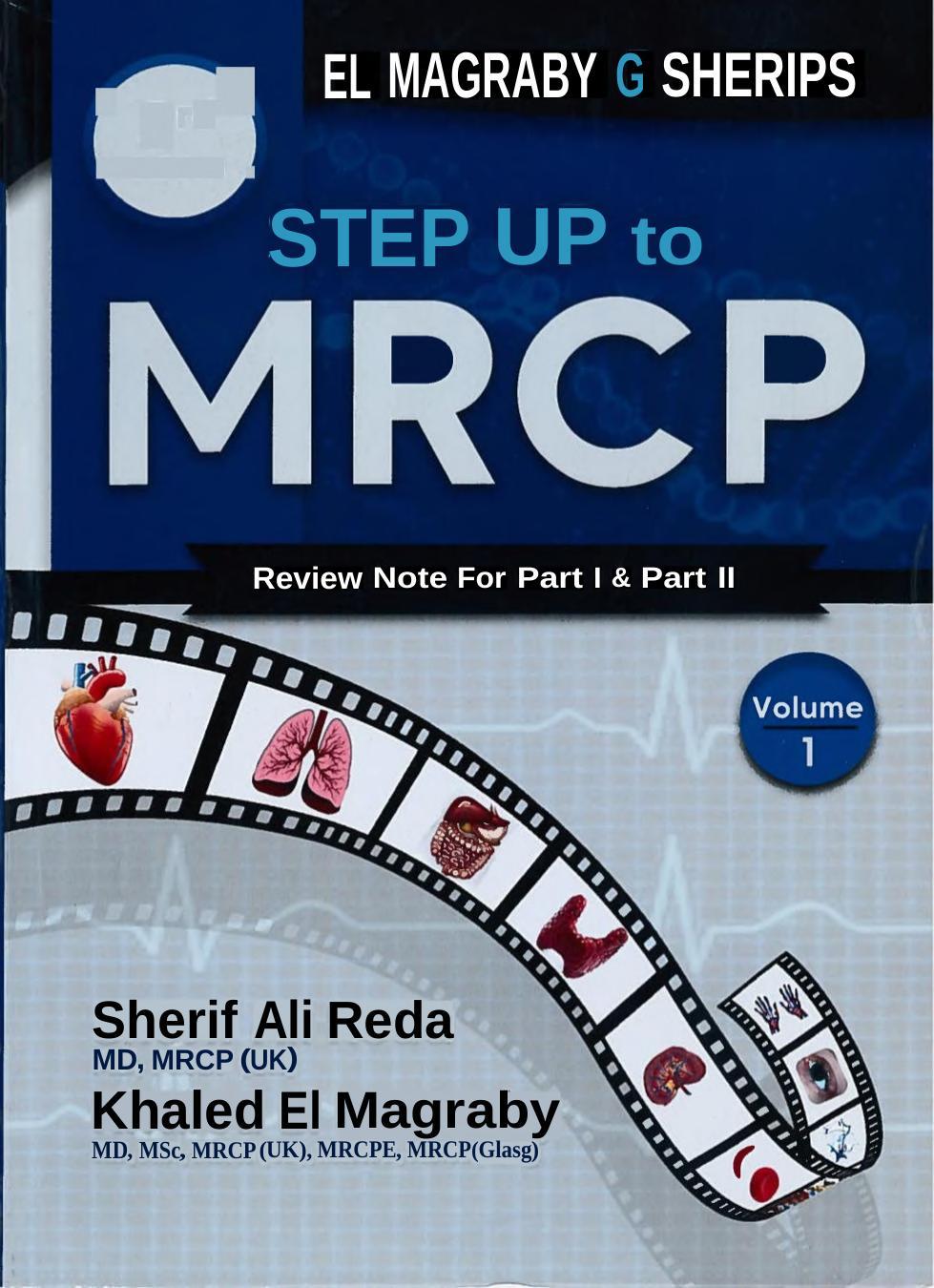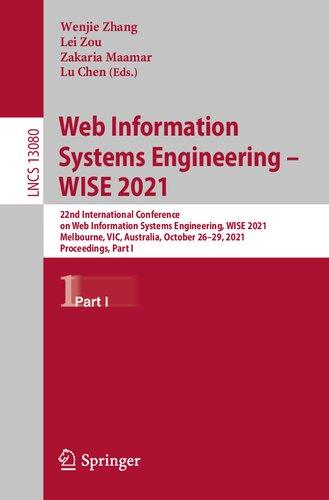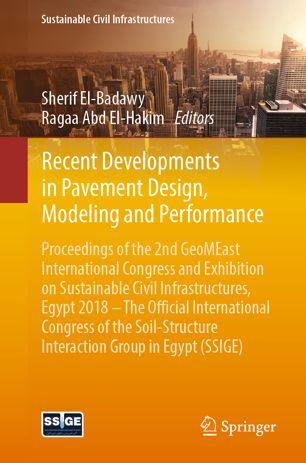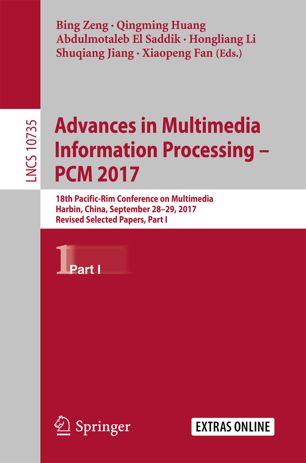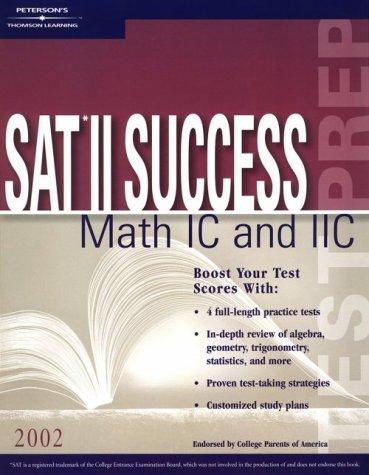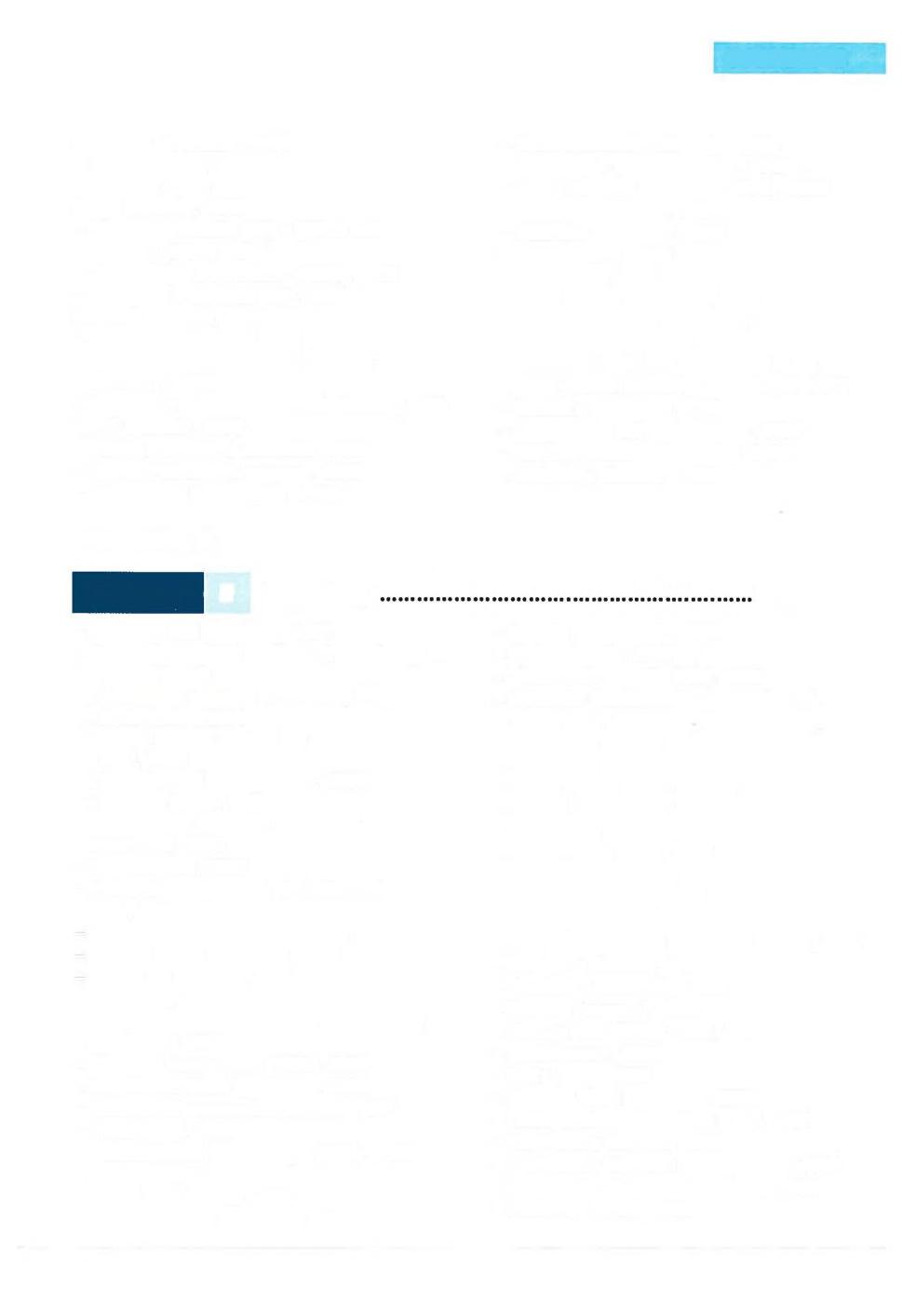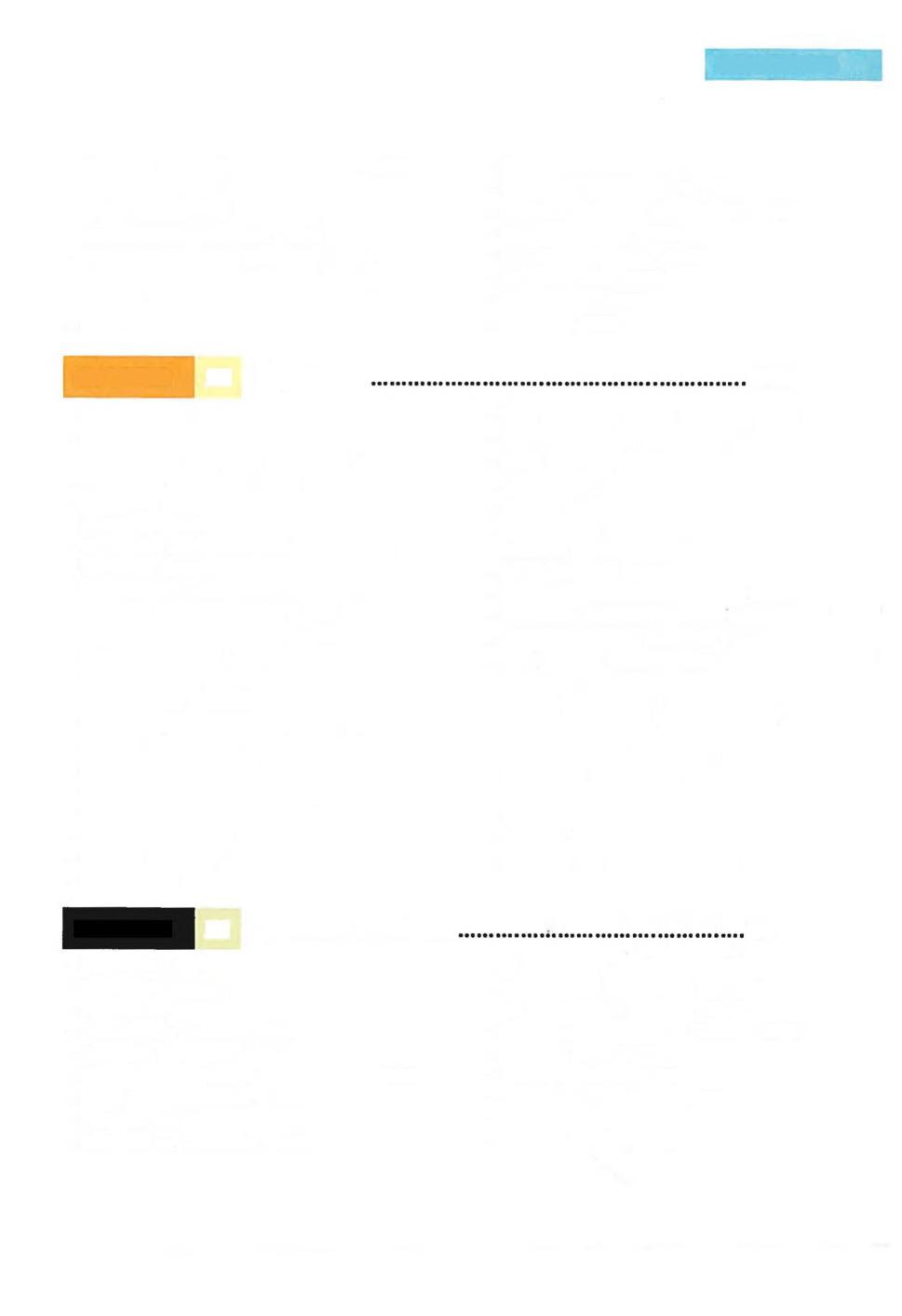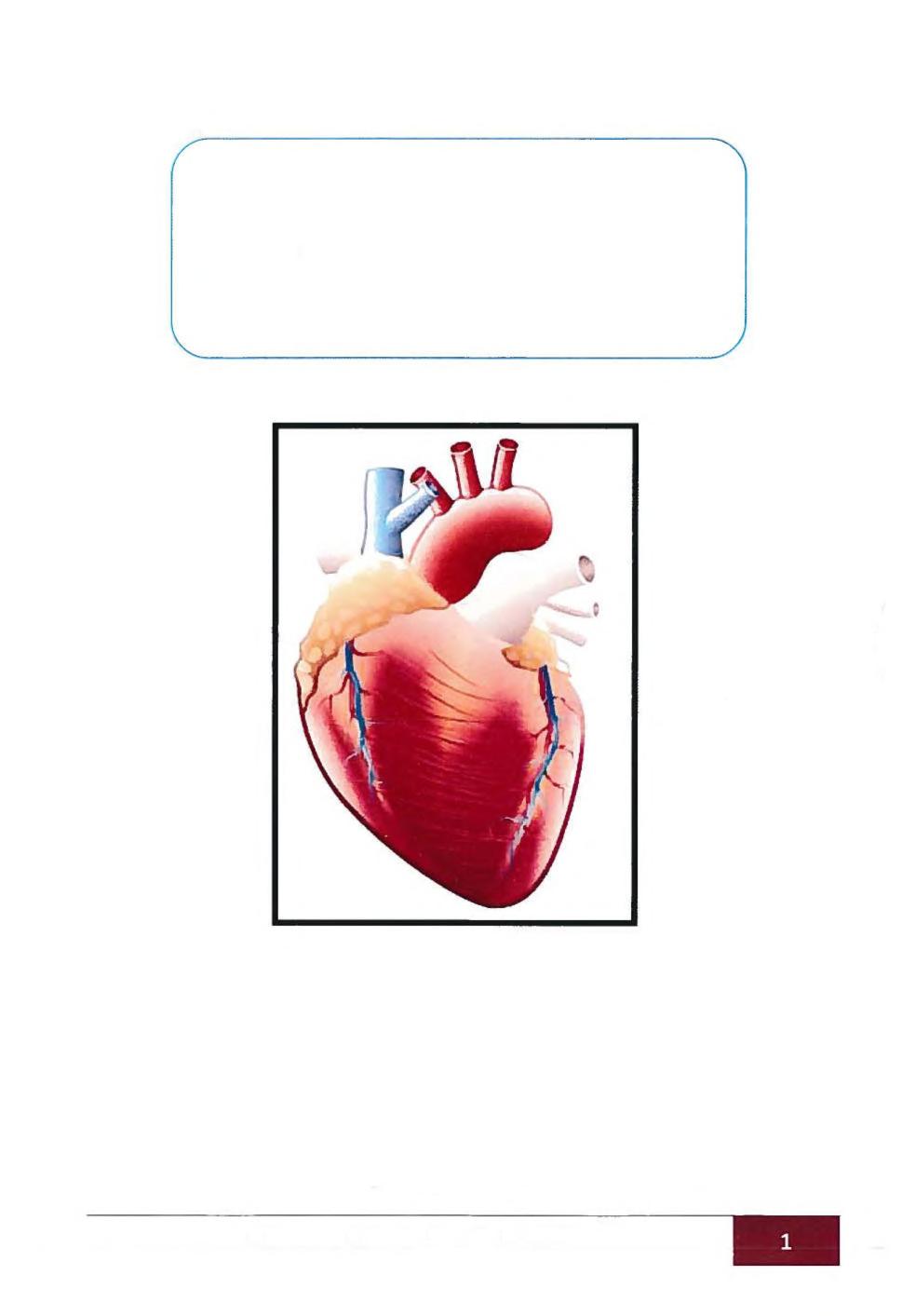(Ebook) EL MAGRABY & SHERIF’S Step Up to MRCP Review Note for Part I and Part II (3 VOL), 3e (2023)_(9789778670820)_(Middle East Libraries) by EL MAGRABY & SHERIF’S ISBN 9789778670820, 977867082X download
https://ebooknice.com/product/el-magraby-sherifs-step-up-to-mrcp-
review-note-for-part-i-and-partii-3-vol-3e-2023-9789778670820-middle-east-libraries-55057044
Start reading on any device today!
(Ebook) Vagabond, Vol. 29 (29) by Inoue, Takehiko ISBN 9781421531489, 1421531488
https://ebooknice.com/product/vagabond-vol-29-29-37511002
ebooknice.com
(Ebook) Web Information Systems Engineering – WISE 2021: 22nd International Conference on Web Information Systems Engineering, WISE 2021, Melbourne, VIC, Australia, October 26-29, 2021 Proceedings, Part I by Wenjie Zhang, Lei Zou, Zakaria Maamar, Lu Chen, (eds.) ISBN 9783030908874, 3030908879
https://ebooknice.com/product/web-information-systems-engineeringwise-2021-22nd-international-conference-on-web-information-systems-engineeringwise-2021-melbourne-vic-australia-october-26-29-2021-proceedings-part-i-37590228
ebooknice.com
(Ebook) Mechanical Alloying for Fabrication of Advanced Engineering Materials by M. Sherif El-Eskandarany ISBN 9780815514626, 081551462X
https://ebooknice.com/product/mechanical-alloying-for-fabrication-of-advancedengineering-materials-921044
ebooknice.com
(Ebook) Recent Developments in Pavement Design, Modeling and Performance by Sherif El-Badawy, Ragaa Abd El-Hakim ISBN 9783030019075, 9783030019082, 3030019071, 303001908X
https://ebooknice.com/product/recent-developments-in-pavement-design-modelingand-performance-7320708
ebooknice.com
(Ebook) Sustainable Solutions for Railways and Transportation Engineering by Sherif El-Badawy, Jan Valentin ISBN 9783030019105, 9783030019112, 3030019101, 303001911X
https://ebooknice.com/product/sustainable-solutions-for-railways-andtransportation-engineering-7320710
ebooknice.com
(Ebook) Advances in Multimedia Information Processing – PCM 2017: 18th Pacific-Rim Conference on Multimedia, Harbin, China, September 28-29, 2017, Revised Selected Papers, Part II by Bing Zeng, Qingming Huang, Abdulmotaleb El Saddik, Hongliang Li, Shuqiang Jiang, Xiaopeng Fan ISBN 9783319773797, 9783319773803, 3319773798, 3319773801
https://ebooknice.com/product/advances-in-multimedia-information-processingpcm-2017-18th-pacific-rim-conference-on-multimedia-harbin-chinaseptember-28-29-2017-revised-selected-papers-part-ii-7149594
ebooknice.com
(Ebook) Dragonsworn (Were-Hunters, #10; Dark-Hunter, #26; Hunter Legends, #29; Lords of Avalon, #06) by Sherrilyn Kenyon ISBN 9781250102652, 9781250169464, 9781250102676, 1250102650, 1250169461, 1250102677
https://ebooknice.com/product/dragonsworn-were-hunters-10-dark-hunter-26-hunterlegends-29-lords-of-avalon-06-22268188
ebooknice.com
(Ebook) Codes, Cryptology and Information Security. 4th International Conference, C2SI 2023 Rabat, Morocco, May 29–31, 2023 Proceedings by Said El Hajji, Sihem Mesnager, El Mamoun Souidi, (eds.) ISBN 9783031330162, 3031330161
https://ebooknice.com/product/codes-cryptology-and-information-security-4thinternational-conference-c2si-2023-rabat-moroccomay-2931-2023-proceedings-50558812
ebooknice.com
(Ebook) SAT II Success MATH 1C and 2C 2002 (Peterson's SAT II Success) by Peterson's ISBN 9780768906677, 0768906679
https://ebooknice.com/product/sat-ii-success-math-1c-and-2c-2002-peterson-s-satii-success-1722018
ebooknice.com
EL MAGRABY G SHERIPS STEP UP to Review Note For Part I & Part II Sherif Ali Reda MD, MRCP (UK)
Khaled El Magraby MD, MSc, MRCP (UK), MRCPE, MRCP(Glasg)
EL MAGRABY & SHERIF’S Review Note for Part I & Part II
3rd Edition
EL MAGRABY & SHERIF’S Step Up MRCP Review Note for Part I & Part II Sherif Ali Reda MD, MRCP (UK)
MBBCH, Msc (Intemal Medicine), Msc (Nephrology), TQM Dipl. (AUC) Consultant intemal medicine and nephrology Ain Shams University Hospital Cairo-Egypt
Khaled El Magraby MD, MSc, MRCP (UK), MRCPE, MRCP(Glasg), SCE Acute Medicine Consultant Acute Intemal Medicine, NHS (UK.)
EL MAGRABY & SHERIF’S
Step Up to MRCP
Review Note for Part I & Part II
By
Sherif Ali Reda MD, MRCP (UK)
MBBCH, Msc (Intemal Medicine), Msc (Nephrology), TQM Dipl (AUC)
Consultant intemal medicine and nephrology
Ain Shams University Hospital, Cairo-Egypt
El nWiriilfl MIDDLE EAST PUBLISHING & DISTRIBUTION publishingqnd distrlbutlon
Khaled EI Magraby MD, MSc, MRCP (UK), MRCPE, MRCP(Glasg), SCE Acute Medicine
Consultant Acute Intemal Medicine, NHS (UK)
Copyright © 2023 Middle East & El Marwa for Publishing & Distribution. All rights reserved
ISBN: 978-977- 86708-2-0
Deposit Number: 11303/2023
All rights reserved
No part of this publication may be reproduced , stored in any retrieval system or transmitted in any form or by any means,electronic, mechanical, photocopying, recording or otherwise, without the prior written permission of the copy right holders for which application should be addressed in the first instance to the publishers. The authors and publishers have also attempted to trace the copyright holders of all material reproduced in this publication and apologize to copyright holders if permission to publish in this form has not been obtained.If any copyright material has not been acknowledged please write and let us know so we may rectify materials mentioned in this book.
This book does not indicate whether a particulartreatment is appropriate or suitable for a particular individual. Ultimately it is the sole responsibility of the medical professional to make his or her own professional judgements, so as to advise and treat patients appropriately.
Publisher: Middle East & El Marwa for Publishing & Distribution
Cairo, Egypt
Tel. (+20) 1110150022 - (+20) 1211161255
E-mail: ar201078@gmail.com
Publishing Services Manager & Design: Abd El Hamid Abd El Ghafar
Printing Services Manager: Abd El Aleem Adel El Syed
Printed in Egypt
PREFACE rr^T) I feel fortunate and honored to present this third edition of STEP UP TO MRCP to the community of medicine.it has been 7 years since the first edition of this book; the long interval and the increasing demand for new edition of this book- who gained a lot of trust and credibility of the medical society- was the main challenge to publish this edition.
The other challenge was to walk the line between over simplification and data overflow, in the world of internal medicine which is full of guidelines and studies.
this was the main stimulus to fill this book with diagrams, illustrations, photos, radiology material and tables, as to make it easy for everyone to pick up the needed information in an easy way for new and experienced physicians as well.
I would like to thank god for helping me to accomplish this work, and also I would like to thank the god father of this book Khalid Maghraby who invited me to contribute to this edition and helped us during completing this work.
My deepest gratitude goes to my wife Shaimaa and my kids Nada and Mohamed who tolerated me throughout this hard time. to my mother who continued to inspire and pray for me and finally to the soul of my father.
Last but not least, I would like to thank Mr,Abdelhamid the publisher and ownerof middle east library ,who spent a lot of time and effort to make this book exists, attractive and in such a wonderful quality.
S.A. Reda, MD, MRCP (UK) June 2023
FORWARD Welcome to the world of internal medicine! This medical book is the result of great effort and dedication by its author to provide you with the most updated and comprehensive knowledge of internal medicine.
The book is designed to meet the needs of every medical student, resident, and physician who is pursuing a career in internal medicine. It covers the whole spectrum of internal medicine, from the basics of pathophysiology to the most advanced treatment strategies.
The book is structured in a clear and well-organized manner.
This book is highly recommended for everyone studying internal medicine, particularly those aiming to obtain the MRCP degree. It is an invaluable resource that will help you build a strong foundation in internal medicine and prepare you for success in your medical career.
Prof. Dr. Khaled Makboul Professor of internal medicine and endocrinolgy
Ain Shams University June 2023
CHAPTER Introduction, 5
1 Cardiology -Anatomy and Physiology of The Heart, 6
-Exercise: physiological changes, 10
-Valsalva maneuver, 11
Cardiovascular pharmacology, 12
- Angiotensin-converting enzyme inhibitors (ACEIs), 12
- Angiotensin II receptor blockers, 13
-Beta-blockers, 14
-Hydralazine, 15
-Loop diuretics, 15
-Thiazide diuretics, 16
-Adenosine, 20
- Amiodarone (Cordarone®), 20
- Amiodarone and the thyroid gland, 22
-Flecainide, 24
-Warfarin, 25
-Adenosine diphosphate (ADP) receptor inhibitors, 27
-Glycoprotein llb/llla receptor antagonists, 28
-Dabigatran, 28
-Combination antiplatelet and anticoagulant therapy, 30
-Parenteral anticoagulation, 31
- Antiplatelets: summary of latest guidelines, 31
-Statins, 32
-Nicorandil, 33
-Digoxin and digoxin toxicity, 34
Clinical Cardiology, 37
-Heart sounds, 37
-Murmurs, 39
-Pulses, 41
-Jugular venous pulse (JVP), 43
ECG, 45
-ECG: axis deviation, 45
-ECG: normal variants, 45
-ECG: coronary territories, 46
-ECG: PR interval, 49
-ECG: digoxin, 50
-ECG: hyperkalaemia, 51
-ECG: hypokalaemia, 51
1 -ECG: left bundle branch block, 52
-ECG: right bundle branch block, 53
-ECG: P wavechanges, 54
-ECG: T wave changes, 54
-Peri-arrest rhythms: tachycardia, 54
-Peri-arrest rhythms: bradycardia, 56
-ECG: hypothermia, 58
-ECG: ST elevation, 58
-ECG: STdepression, 58
-SSS (Sick Sinus Syndrome) = Sinus Node Disease (SND) = (tachy-brady syndrome), 59
Arrhythmias, 60
-Investigating palpitations, 60
-Long QT syndrome (LQTS), 61
-Torsade’s de pointes, 64
-Arrhythmogenic right ventricular cardiomyopathy, 65
-Ventricular tachycardia (VT), 66
-Heart block (HB), 68
-Wolf-Parkinson White Syndrome, 71
- Atrial fibrillation (AF), 75
- Atrial flutter, 84
-Multifocal atrial tachycardia (MAT), 84
-Supraventricular tachycardia (SVT), 85
-Broad complex tachycardia, 87
-Pacemakers: temporary, 88
-Pacemaker nomenclature, 88
-Brugada syndrome, 89
-Catecholaminergic polymorphic ventricular tachycardia CPVT, 90
-Implantable cardioverter defibrillators (ICD) (Dual chamber pacemaker), 90
Hypertension, 92
-Hypertension: diagnosis and management, 92
-Malignant hypertension, 99
-Hypertensive crisis, 99
-Hypertension: secondary causes, 100
-Isolated systolic hypertension (ISH), 101
-hypertension management in Diabetes mellitus, 101
-Hypertension in pregnancy, 102
-Pre-eclampsia, 103
-Eclampsia, 106
CONTENTS Heart failure, 108
-Heart failure, 108
-B-type natriuretic peptide (BNP), 110
-Atrial natriuretic peptide (ANP), 112
-Drug management in chronic heart faliure, 112
Aortic dissection, 116
Rheumatic fever, 119
-Rheumatic fever, 119
Valvular heart diseases, 121
-Aortic stenosis, 121
-Aortic regurgitation (AR), 124
-Bicuspid aortic valve (BAV), 125
-Mitral stenosis, 126
-Mitral regurgitation (MR), 128
-Mitral valve prolapse (MVP), 134
-Tricuspid regurgitation, 134
-Prosthetic heart valves, 135
Infective endocarditis, 137
-Infective endocarditis, 137
-Infective endocarditis: Modified Duke Criteria, 138
-Infective endocarditis: prognosis and management, 141
-Infective endocarditis: prophylaxis, 144
Pericardial diseases, 146
-Pericarditis, 146
-Constrictive pericarditis, 147
-Cardiac tamponade, 148
Myocarditis, 150
-Myocarditis, 150
Ischemic heart disease, 151
-Chest pain: Assessment of patients with suspected cardiac chest pain, 151
-Angina pectoris: drug management, 153
-Acute coronary syndrome, 154
-Acute coronary syndrome: initial management, 159
-Thrombolysis, 162
-Percutaneous coronary intervention, 163
-Laser trans-myocardial revascularisation, 164
- Acute coronary syndrome: prognostic factors, 169
- Syndrome X, 170
-Cardiac enzymes and biomarkers, 170
- Myocardial infarction: classification and management, 172
-Myocardial infarction: secondary prevention, 174
-Myocardial infarction: complications, 175
Peripheral arterial disease, 180
-Peripheral arterial disease:
-Management, 180
-Renal vascular disease, 181
Pulmonary Hypertension182
-Primary Pulmonary Hypertension, 182
-Pulmonary arterial hypertension, 183
Pulmonary embolism186
-Pulmonary embolism: investigation, 186
-Pulmonary embolism: management, 191
Cardiac imaging
- Cardiac imaging, 195
-Cardiac catherization and oxygen saturation levels, 196
Cardiomyopathiesl98
-Cardiomyopathy, 198
-Dilated cardiomyopathy (DCM), 201
-Hypertrophic Obstructive Cardiomyopathy (HOCM), 202
-Restrictive cardiomyopathy, 206
-Takotsubo cardiomyopathy, 206
-Fabry disease, 207
Congenital heart disease ,208
-Dextrocardia, 208
-Congenital heart disease: types, 209
-Patent ductus arteriosus (PDA), 210
-Ventricular septal defects (VSD), 211
- Atrial septal defects (ASD), 212
-Patent Foramen Ovale (PFO), 214
-Paradoxical embolisation, 214
-Eisenmenger's syndrome, 215
-Tetralogy of Fallot (TOF), 216
-Coarctation of the aorta, 217
-Epstein’s anomaly, 218
-Transposition of the great arteries, 218
Syncope, 219
Miscellaneous, 221
-Exercise tolerance tests, 221
-Adult advanced life support, 222
-DVLA important notes, 223
- Atrial myxoma, 224
-Cardiac transplantation, 225
-Kawasaki disease, 226
-Down syndrome (Triosmy 21), 227
-Tumer's syndrome, 228
-Marfan's syndrome, 229
-Takayasu's arteritis, 230
-Fat embolism syndrome, 231
-Cholesterol embolization syndrome, 231
2 Pulmonology CHAPTER Anatomy of the lung, 237
- Azygous lobe, 238
Respiratory physiology, 238
- Respiratory physiology: Control of respiration, 239
- Respiratory physiology: hypoxia, 239
Respiratory physiology: lung compliance (C=V/P), 240
- Respiratory acidosis, 240
Respiratory alkalosis 240
How to interpret a chest X-ray, 241
Oxygen dissociation curve
- Transfer factor, 245
Pulmonary function tests, 246
- Flow volume loop, 247
- Atelectasis, 247
- Altitude related disorders, 248
- Asthma, 249
- Leukotriene receptor antagonists, 258
- Omalizumab, 258
- Acute severe asthma, 259
- Pulmonary eosinophilia, 262
- Eosinophilic granulomatosis with polyangiitis (Churg-Strauss syndrome) (CSS), 263
- Drugs used in respiratory medicine, 265
- Microscopic polyangiitis, 266
- Granulomatosis with polyangiitis, 266
- Loffler's syndrome, 267
- Tropical pulmonary eosinophilia, 267
- Aspergillus and Aspergillosis, 268
- Allergic broncho-pulmonary aspergillosis (ABPA), 269
- Aspergilloma, 271
COPD, 272
o COVID-19 & COPD, 283
- COPD: Long-Term Oxygen Therapy, 291
- Smoking cessation, 292
Alpha-1 antitrypsin deficiency (A1AT), 294
- Oxygen therapy, 296
- Non-invasive ventilation (NIV), 297
- Bronchiectasis, 300
- Bronchiectasis, 302
- Kartagener's syndrome (Immotile cilia syndrome), 304
- Cystic fibrosis (CF syndrome), 304
- Obstructive sleep apnoea/hypopnoea syndrome, 308
- Pneumonia, 309
- Legionella Disease (LD), 313
- Mycoplasma pneumoniae, 314
- Eosinophilic pneumonia, 317
- Klebsiella, 317
- Psittacosis, 318
Lung abscess, 319
Rheumatoid arthritis: respiratory manifestations, 320
Middle East respiratory syndrome, 321
- Tuberculosis, 321
- Yellow nail syndrome (see pic), 328
- Lung fibrosis, 328
- Extrinsic allergic alveolitis (EAA) (Farmer lung) (HP), 329
- Idiopathic pulmonary fibrosis (IPF), 331
- Lymphoid interstitial pneumonia, 333
- Sarcoidosis, 333
- Bilateral hilar lymphadenopathy, 337
- Pneumoconiosis, 338
- Berylliosis, 338
- Silicosis, 339
- Asbestos and the lung, 340
- Pulmonary embolism (PE), 342
- Pulmonary embolism: management, 346
- Fat embolism, 347
- Pneumothorax, 348
Video Assisted Thoracoscopic Surgery (VATS), 351
Pleural effusion, 352
- Chest drain, 354
- Chest x-ray: cavitating lung lesion, 356
- Pulmonary hypertension: causes and classification, 356
- Lung cancer, 357
- Non-small cell lung cancer (NSCLC), 359
- Lung cancer: referral, 367
- lung metastases, 367
- Bronchiolitis, 368
- Bronchiolitis Obliterans, 370
- Chronic cough, 370
- Pulmonary Alveolar Proteinosis, 371 Ludwig’s angina, 372 Alveolar microlithiasis, 372
- ARDS (acute respiratory distress syndrome), 373
- Post-extubation stridor (PES), 375
CHAPTER General, 381
Gastroenterology & Hepatology - Gastrointestinal enzymes acid secretion, 381
- Gastrointestinal hormones, 381
- Brunner's glands which secrete alkaline mucus are found in the duodenum, 383
- Gastrointestinal cause of clubbing, 383
- Ilio-caecal TB»no clupping, 383
- Hiccup, 384
- Pharyngeal pouch (Oesophageal diverticula), 384
Esophagus, 386
- Esophageal disorders386
- Abdominal pain (in MRCP), 387
- Achalasia, 390
- Diffuse esophageal spasm, 392
- Dysphagia, 393
- Gastro-esophageal reflux disease, 395
- Barretfs oesophagus, 396
- Oesophagitis in immunosuppressive patients, 397
- Eosinophilic oesophagitis (EOE), 398
- Acute upper gastrointestinal bleeding, 398
Esophageal Rupture and Tears (Boerhaave’s syndrome), 404
- Oesophageal cancer, 404
Stomach and Duodenum, 407
- Gastrointestinal disorders, 407
- Functional Dyspepsia, 409
- Helicobacter pylori (H-Pylori), 409
- Gastric MALT lymphoma, 413
- Peptic ulcer, 415
- Zollinger-Ellison syndrome (ZES), 421
- Somatostatin again, 423
-Somatostatinoma, 423
- Gastroparesis, 424
- Gastric cancer, 425
Gastrointestinal stromal tumour, 428
Small and Large Intestine, 429
- intestinal disorder, 429
- VIPoma, 430
- Dumping syndrome, 432
- Small bowel bacterial overgrowth syndrome (SBBOS), 432 Malabsorption, 433
Jejunal villous atrophy, 434
- Coeliac disease, 435
- Tropical sprue, 440
- Whipple's disease, 441
Lactose intolerance, 443
- Irritable bowel syndrome, 443
- Initial diagnosis of irritable bowel syndrome, 443
- Diet, 445
- First-line pharmacological treatment, 445
- Functional constipation, 446
- Iower gastrointestinal tract Ischaemia, 447
- Imaging in bowel obstruction, 449
- Pneumoperitoneum, 450
- Melanosis coli (Surreptitious laxative abuse), 452
-Familial Mediterranean Fever, 452
- Inflammatory bowel disease (IBD), 453
-Crohn's disease (CD), 453
- Ulcerative colitis (UC), 460
- Ulcerative colitis: colorectal cancer, 466
- Toxic megacolon, 467
- Lymphocytic colitis, 469
-Microscopic colitis, 469
- Diverticulosis, 470
- Aminosalicylate drugs , 472
- Dysplastic colonic polyps, 478
- Villous adenoma, 479
- Peutz-Jeghers syndrome (PJS), 479
- Angiodysplasia, 480
- Intussusception, 481
- Aorto-enteric fistulae (AEF), 481
- Colorectal cancer, 482
- Cowden’s syndrome, 488
- Hamartomatous polyposis syndrome, 489
Meckefs diverticulum, 489
- Capsule endoscopy, 490
- Clostridium difficile, 490
- Gastroenteritis, 495
- Acute appendicitis, 498
- Gastrointestinal parasitic infections, 501
- Carcinoid syndrome, 502
- Pseudomyxoma peritonei, 504
Pancreatic, 505
- Acute pancreatitis, 505
- Chronic pancreatitis, 509
- Pancreatic cancer, 512 Liver, 514
- Liver function test, 514
- Alkaline phosphatase, 515
- Hepatobiliary disease and related disorders, 517
- Hepatitis B, 519
- Hepatitis B and pregnancy, 523
- Hepatitis C, 524
- Hepatitis D, 527
-Hepatitis E, 527
- Chronic active hepatitis, 528
- Acute liver failure, 528
- liver cirrhosis, 529
- Ascites, 533
- Spontaneous bacterial peritonitis, 538
Hepatic encephalopathy, 540
Portal hypertension, 541
-Hepatorenal syndrome (HRS), 543
-Hepatopulmonary syndrome (HPS), 544
- Hyponatraemia in Patients with chronic liver disease, 545
- Gilberfs syndrome, 545
- Rotor syndrome, 546
- Crigler-Najjar syndrome, 546
- Pregnancy: jaundice, 547
CHAPTER Dubin-Johnson syndrome (DJS), 548
- Budd-Chiari Syndrome, 548
- Autoimmune hepatitis, 550
- Primary biliary cholangitis (Primary biliary cirrhosis), 551
- Primary sclerosing cholangitis, 554
- Hereditary Haemochromatosis, 556
- Wilson's disease (Hepato-lenticular degeneration), 559
- Drug-induced liver disease, 561
- Alcoholic liver disease, 562
- Non-alcoholic fatty liver disease, 563
- Alcohol induced hypoglycemia, 565
-liver abscess, 565
-Hydatid cysts, 566
-Hepatocellular carcinoma (HCC), 567
- Liver transplant, 568
- Liver biopsy, 569
Biliary Tract, 570
- Ascending cholangitis, 570
- Bile-acid malabsorption, 570
Nutrition in Gastroenterology, 572
- Malnutrition, 572
- Protein losing enteropathy, 573
- Total parenteral nutrition, 574
- Enteral feeding, 574
Refeeding syndrome, 576
- Miscellaneous, 578
4 Infectious Diseases & STDs Basics of Infectious Diseases, 583
- Identifying gram-positive bacteria, 584
- Exotoxins and endotoxins, 585
Virulence factors, 588
Antibiotics, 589
- Antibiotics: mechanisms of action, 589
Antibiotics: bactericidal vs bacteriostatic activity, 589
- Linezolid, 590
- Macrolides, 590
- Quinolones, 591
-Tetracyclines, 591
- Quinupristin & Dalfopristin antibiotics, 592
- Sulfonamides, 593
- Vancomycin 593
- Trimethoprim, 594
- Diethylcarbamazine, 594
- Metronidazole, 595
579
- Antibiotic administration guidelines, 595
- Antiviral agents, 598
- Antifungal agents, 599
-Incubation periods of different infectious agents, 600
- Vaccinations, 600
- BCG vaccine 602
-Tetanus: vaccination, 603
Bacteriology, 605
-Staphylococci, 605
- MRSA, 607
- Streptococci, 608
- Enterococcus, 610
- Vancomycin-resistant enterococci, 610
- Clostridia, 611
- Escherichia coli, 612
- Listeria monocytogenes, 613
- Pyogenic liver abscess, 614
- Tetanus, 614
- Gas gangrene, 615
- Salmonella (Typhoid fever) (Enteric fever), 616
- Shigella, 617
- Escherichia coli, 618
- Campylobacter, 619
Mycobacteria, 620
- Tuberculosis (TB), 620
-Leprosy (Hansen’s disease), 631
Sepsis Syndrome, 633
- Staphylococcal toxic shock syndrome (STSS), 633
- Sepsis, 635
Respiratory Infections, 638
- Respiratory pathogens, 638
- Acute epiglottitis, 639
- Croup, 641
- Diphtheria, 642
-H1N1 influenza pandemic, 643
- Legionella, 644
- Mycoplasma pneumoniae, 646
Skin and Soft Tissue Infections, 647
- Cellulitis, 647
- Necrotising fasciitis, 649
Bone and Joints Infections, 650
Septic arthritis, 650
Osteomyelitis, 650
Central Nervous system
Infections, 651
Meningitis, 651
Meningococcal septicaemia, 654
Urinary tract infection
Virology, 667
- DNA viruses, 667
- RNA viruses, 668
- Cytomegalovirus, 669
Herpes simplex virus (HSV), 670
- Genital herpes, 670
-Chickenpox, 671
- Chickenpox exposure in pregnancy, 673
- Ramsay Hunt syndrome, 673
- Enteroviruses, 674
- Epstein-Barr virus (EBV): associated conditions, 674
- Infectious mononucleosis (IMN) (EBV) (glandular fever) (HHV-4), 675
- Measles, 676
- AMS (Atypical Measles Syndrome), 678
Reye's syndrome, 678
Parvovirus B19 (fifth 5th disease) or (slapped cheek syndrome), 679
- Rabies, 680
- Zika virus conditions, 681 Orf, 681
Retroviruses, 682
- HIV:the virus682
HIV: Seroconversion (Acute HIV infection), 683
HIV Immunology, 684
HIV: immunisation, 686
HIV: Highly Active Anti-Retroviral Therapy (HAART), 686
HIV: Pneumocystis jiroveci pneumonia (=PCP), 688
- Urinary tract infection (UTI) in adults: management, 655
Zoonotic, Ectoparasites Infections and protozoans, 656
Leptospirosis (Weil's disease), 656
- Brucellosis, 657
- Anthrax, 658
- Animal bites, 658
- Cat scratch disease, 659
- Scabies, 659
Lyme disease (Borreliosis), 660
Toxoplasmosis, 662
Cryptosporidiosis, 665
Strongyloides stercoralis, 665
Wuchereria bancrofti, 666
Cutaneous larva migrans, 666 655
-HIV:biliary & pancreatic disease (HIV Cholangiopathy), 689
- HIV: diarrhoea, 689
- HIV and pregnancy, 690
-HIV: Kaposi's sarcoma (KS), 691
- HIV: Skin rash (see pic), 692
- HIV and Eye, 692
- HIV: Neuro-complications, 693
- HIV associated nephropathy, 696
- HIV and Addison’s disease, 696
Sexual Transmitted Infections, 697
Chlamydia, 697
Gonorrhoea, 699
Non-gonococcal urethritis, 701
Pelvic inflammatory disease, 701
Syphilis, 703
Q fever, 706
-Yaws, 707
- Chancroid, 708
-Summary of Genital Ulcers, 709
- Genital warts, 710
- Vaginal discharge, 710
-Bacterial vaginosis (BV), 711
-Trichomonas vaginalis, 713
Tropical Infections, 715
-Malaria: Falciparum, 715
- Malaria: non-falciparum, 717
-Malaria: prophylaxis, 718
-Schistosomiasis, 720
-Leishmaniasis, 721
-Trypanosomiasis, 723
-Tape worms, 724
-Nematodes, 725
-Helminths, 727
- Giardiasis, 730
- Cholera, 730
VOLUME 2 CHAPTER 5 Endocrinology Pituitary Disorders, 747
- Anatomy and physiology, 747
-Insulin stress test, 748
-Dynamic pituitary function tests, 748
-Pituitary adenoma, 748
- Growth hormone (GH), 751
-Growth hormone deficiency (GHD), 752
- Adverse effects of GH replacement, 753
- Contraindications to GH replacement, 753
- Acromegaly, 754
- Prolactin and galactorrhoea, 757
- Craniopharyngioma, 761
Antidiuretic hormone (ADH), 761
- SIADH (TADH), 763
Diabetes insipidus (Dl) (= NO ADH), 765
Water deprivation test, 768
- Pituitary apoplexy, 770
Thyroid Gland Disorders, 771
-introduction, 771
- Thyroid function tests (TFTs), 775
- Thyrotoxicosis, 776
- Graves' disease, 779
-Toxic Multinodular Goitre (TMNG), 783
-Toxic adenoma (Plummer’s disease), 783
-Thyroid eye disease, 784
Special Diagnoses, 732
- Pyrexia of unknown origin, 732
- Lymphadenopathy (causes of generalised lymphadenopathy), 732
- African Tick Typhus, 733
-Rocky Mountain spotted fever, 733
- Mediterranean Spotted Fever (Boutonneuse fever), 734
Dengue fever, 734
- Yellow fever, 735
- Babesiosis, 736
- Congenital infections (e.g. rubella, toxoplasmosis and cytomegalovims), 736
- Post-exposure prophylaxis, 738
- Whooping cough (pertussis), 739
- Botulism, 739
- Encephalitis, 740
- Histoplasmosis, 740
- Swimmer's ear, 742
- Thyroid storm, 786
- Subclinical hyperthyroidism, 789
- Subclinical hypothyroidism, 789
- Hypothyroidism, 790
- Hypothyroidism: management, 792
- Hashimoto's thyroiditis (lymphocytic thyroiditis), 793
Pendred’s syndrome, 794
- Sick euthyroid syndrome, 794
- Thyroid cancer, 795
- Skin disorders associated with thyroid disease, 798
- Congenital hypothyroidism, 801
-Subacute (De Quervain's) thyroiditis, 801
- Riedefs thyroiditis, 802
- Pregnancy and thyroid problems, 803
Adrenal Gland Disorders, 807
Adrenal gland, 807
Dehydroepiandrosterone sulphates (DHEAS), 807
- Cortisol, 808
- Aldosterone, 810
Adrenal hyperandrogenism, 811
Premature adrenarche, 812
Corticosteroids, 813
- Hyperaldosteronism: OverView, 815
- Primary hyperaldosteronism (Conn's syndrome), 816
Negative screening tests, 819
Aldosterone receptor antagonists, 820
- Cushing's syndrome, 821
- Fit for surgery, 824
- Unfit for surgery, 824
- Addison's disease (primary hypoadrenalism), 825
Addisonian crisis, 828
Secondary and tertiary hypoadrenalism, 829
Nelson's syndrome, 831
Phaeochromocytoma, 832
Congenital adrenal hyperplasias (CAH), 835
Gonadal Disorders, 837
Disorders of sex development, 837
- Disorders of sex hormones, 838
- Dihydrotestosterone (DHT), 838
- Selective Estrogen Receptor Modulators (SERMs), 840
- Physiological effects of LH, FSH, and sex hormones, 841
- Klinefelter's syndrome, 841
Kallmann's syndrome, 842
- Gynaecomastia, 842
- Hypogonadism, 844
- Delayed puberty, 847
- Amenorrhoea, 849
Polycystic ovarian syndrome (PCOS), 850
-Hirsutism, 854
- Hypertrichosis, 855
Androgen insensitivity syndrome, 855
Premature ovarian insufficiency, 856
Hormone replacement therapy, 857
Important Endocrine Disorders, 859
Multiple Endocrine Neoplasia (MEN), 859
- Autoimmune Poly-endocrinopathy / Polyglandular Syndrome (APS), 862
Carcinoid syndrome, 864
Pancreatic Disorders, 865
- Pancreatic Hormones, 865
Glucose transporters, 865
Diabetes mellitus, 868
OGTT (Oral Glucose Tolerance Test), 872
Impaired Glucose Regulation (IGR), 872
Glycosylated haemoglobin (HbA1c), 874
Drugs in diabetes, 876
Diabetes mellitus: management of type 1, 878
Diabetes mellitus: management of type 2, 879
-Glycaemic index, 886
- Metformin, 887
- Sulfonylureas (SU), 888
Meglitinides, 890
Thiazolidinediones (TZD), 890
-Insulin, 891
- Diabetes Mellitus: GLP-1 and the new drugs, 895
Sodium-glucose cotransporter 2 inhibitors (gliflozins), 897
- Alpha-glucosidase inhibitors, 898
Diabetes mellitus: Ramadan, 899
Latent autoimmune diabetes of adulthood (LADA), 900
- MODY (Type 1.5 DM), 900
- Diabetic ketoacidosis (DKA), 901
Hyperosmolar Hyperglycaemic Non ketotic Coma (HHNC), 905
- Diabetic Neuropathy, 908
Diabetic Dermopathy, 913
- Diabetic Retinopathy, 916
- Pregnancy: diabetes mellitus, 919
-DVLA: diabetes mellitus, 921
- Hypoglycaemia, 922
- Insulinoma, 923
- Glucagonoma, 924
-Hyperlipidaemia: Management, 925
- Secondary hypertriglyceridaemia, 929
Lipid-lowering agents, 931
- Characteristic Xanthomata in hyperlipidaemia, 932
Metabolic syndrome, 932
- Obesity, 937
Medical treatments of obesity, 938
Obesity: bariatric surgery, 939
Acute phase proteins, 940
Galactosaemia, 941
Familial hypertriglyceridaemia, 941
- Familial hypercholesterolaemia, 942
- Hyperuricaemia, 943
Hyperparathyroidism, 948
Electrolytes Checklist, 944
- Hypercalcaemia: causes, 944
-Hypercalcaemia: management, 947
- Hypoparathyroidism, 953
- Hungry bone syndrome, 955
-Hypocalcaemia: causes and management, 955
-Hypomagnesaemia, 956
- Vitamin D resistant rickets, 957
- Hypokalemia with/without hypertension, 958
- Alkaline phosphatase, 964
-Hypophosphataemia, 964
CHAPTER - Hyponatraemia, 966
- Hyperkalaemia, 977
- Hypokalaemia, 977
- Pseudohypoparathyroidism, 978
- Pseudohyperkalaemia, 979
- Bartter's syndrome, 979
- Gitelman's syndrome, 980
- Liddle's syndrome, 980
- Hypernatraemia, 980
- Renal tubular acidosis, 981
- Summary of common workup of common endocrine disorders, 982
6 Haematology & Oncology - Important hematological principles, 987
- Blood products, 989
- Blood product transfusion complications, 991
- Plasma exchange, 1002
- Hyposplenism, 1002
- Bloodfilms: moredetails, 1002
- Iron deficiency anemia (IDA), 1003
- Iron studies, 1008
- Methaemoglobinaemia, 1008
- Thalassemia, 1010
- Sideroblastic anaemia, 1013
- Aplastic anaemia, 1014
- Pure Red Cell Aplasia (PRCA), 1015
- Paroxysmal nocturnal hemoglobinuria (PNH), 1016
- Leukoerythroplastic Anemia, 1018
- Hemolytic anemias: by site (Intra/Extra Vascular), 1018
Autoimmune hemolytic anemia (AlHA), 1019
- Photomicrographs from patients with acquired hemolytic anemias, 1022
- G6PD Deficiency (Glucose-6-phosphate dehydrogenase deficiency), 1022
- Anemia of chronic disease, 1024
- Macrocytic anemia, 1025
- Vitamin B12 deficiency, 1026
- Sickle cell disease (SCD), 1028
- Hereditary spherocytosis (HS), 1033
- Cryoglobulinaemia, 1036
- Porphyrias, 1037
- Acute intermittent porphyria in details, 1038
- Assessment of anemia, 1040
- Polycythemia, 1041
983
Polycythemia rubra Vera (PRV), 1042
Myeloproliferative disorders, 1045
Haemochromatosis, 1045
- Neutropenia, 1047
- Neutropenic sepsis (Febrile neutropenia), 1048
- Eosinophilia, 1050
- Hyper-eosinophilic syndrome (HES), 1051
- Lymphopenia, 1052
- Thrombocytosis, 1052
- Thrombocytopenia, 1053
Idiopathic thrombocytopenic purpura (ITP), 1054
- Thrombotic thrombocytopenic purpura (TTP), 1056
- Venous thromboembolism (VTE), 1059
Pregnancy: DVT/PE, 1065
- Superficial thrombophlebitis, 1065
Hepatic Veno-Occlusive Disease (VOD) = Sinusoidal obstruction syndrome, 1066
Leuco-erythroblastic anaemia, 1067
- Drug-induced pancytopenia, 1067
- Coagulation study, 1067
- Myelodysplasia (Myelodysplastic syndrome (MDS), 1070
- Laboratory findings in haematological disease, 1071
- Thrombophilia: causes, 1071
Protein C deficiency, 1072
- Activated protein C resistance (Factor V Leiden mutation) (FVL), 1073
CONTENTS Haemophilia, 1074
- Acquired Haemophilia, 1075
- Factor VII (7) Deficiency, 1076
- Acquired Factor VIII (8) Deficiency, 1076
Hereditary hemorrhagic telangiectasia (HHT), 1077
- Antithrombin III (AT 3) deficiency, 1078
- Disseminated Intravascular Coagulation (DIC), 1079
- Von Willebrand's disease (vWD), 1082
Haematological malignancies: genetics, 1085
Hematological malignancies: infections, 1085
- Acute myeloid leukemia (AML), 1086
- Acute lymphoblastic leukemia (ALL), 1089
- Chronic myeloid leukemia (CML), 1096
Hairy cell leukaemia, 1099
- Leukemoid reaction, 1100
Hodgkin's lymphoma, 1101
Non-Hodgkin’s Lymphomas (NHL), 1104
- Burkitfs lymphoma, 1107
MALToma’s, 1108
Multiple Myeloma (plasma cell myloma), 1109
WaldenstronVs macroglobulinaemia (WM), 1113
Monoclonal gammopathy of undetermined significance (MGUS), 1115
Important hematological drugs
- Heparin, 1116
- Novel oral anticoagulants (NOACs), 1120
- Warfarin, 1121
- Warfarin overdose, 1123
Dabigatran, 1125
- Busulfan, 1127
- Vinblastine, 1127
- Cisplatin, 1128
- Trastuzumab, 1128
- Imatinib, 1130
- Tamoxifen, 1130
UK licensed monoclonal antibodies, 1131
- Rituximab, 1131
Monoclonal antibodies, 1132
Anti-oestrogen drugs, 1132
Cyclophosphamide, 1133
Lead poisoning, 1134
Cytotoxic agents, 1136
- Interferons (IFN), 1138
- Hormone replacement therapy (HRT): adverse effects, 1138
Allergies, 1140
- Anaphylaxis, 1141
- Latex allergy, 1143
- Oral allergy syndrome, 1143
- Hereditary angioedema, 1145
lgG4-related disease, 1146
Post cranial irradiation somnolence syndrome (SS), 1146
- Chemotherapy side-effects: nausea and vomiting, 1147
- Adverse effects of other cancer
- treatment, 1147
- Syringe drivers, 1148
- Oncology in brief, 1149
- Tumor markers, 1149
- Gingival hyperplasia, 1150
- Thymoma, 1151
Esophageal cancer, 1151
- Gastric cancer, 1152
- Breast cancer, 1153
Pagefs disease of the breast, 1153
- Colorectal cancer, 1154
- Cervical cancer, 1155
- Acute Tumor Lysis Syndrome (ATLS), 1155
- Superior vena cava (SVC) obstruction, 1156
- Spinal cord compression, 1158
Palliative care prescribing: pain, 1159
Palliative care prescribing: agitation and confusion, 1161
- Palliative care prescribing: hiccups, 1161
- Palliative care prescribing: secretions, 1162
- Palliative care prescribing: nausea and vomiting, 1162
Palliative care prescribing: Constipation, 1163
- Palliative care: Breathlessness, 1165
- Palliative care: end of life care, 1165
- Positron Emission Tomography (PET), 1166
- Leukocyte alkaline phosphatase (LAP) score, 1166
- ECOG score, 1167
- POEMS syndrome, 1168
CHAPTER Introduction
7 Nephrology -Anatomy and physiology, 1171
-Renin-angiotensin-aldosterone system (RAAS), 1173
-Renal Biopsy 1174
Acute kidney injury
-Acute kidney injury, 1175
- Acuter kidney injury network (AKIN) Stages of AKI, 1176
-Rhabdomyolysis, 1177
-Prerenal uremia vs. Acute Tubular Necrosis (ATN), 1179
-Cholesterol embolization, 1180
-Contrast Nephrotoxicity, 1185
-acute interstitial nephritis
-ADPKD (Autosomal dominant polycystic kidney disease), 1193
-ARPKD, 1198
-Alporfs syndrome, 1199
-Chronic kidney disease, 1200
o eGFR and classification according to NICE guidelines
o Detection of proteinuria
o CKD categories and stages
o Hypertension in CKD
o Renal vascular disease
-Chronic kidney disease and pregnancy, 1211
-Chronic kidney disease: proteinuria, 1212
-Chronic kidney disease: bone disease, 1214
-CKD - Anaemia and Erythropoietin (EPO), 1215
- New treatment of dialysis associated anemia (HIF=HYPOXIA INDUCING FACTOR), 1218
-Renal transplantation, 1220
-Peritoneal dialysis, 1226
-PD peritonitis, 1226
-Arteriovenous fistulas, 1227
-Nephrotic syndrome, 1228
-Glomerular diseases, 1236
-Minimal change disease, 1241
-Focal segmental glomerulosclerosis (FSGS) in adults, 1243
-Membranous glomerulonephritis, 1247
-IgA nephropathy, 1250
o Henoch-Schoenlein purpura (HSP)-lgA vasculitis
o Goodpasture's syndrome (Anti-GBM Disease)
o Wegener's granulomatosis (WG)= granulomatous polyangiitis
RPGN & RENAL VASCULITIS
-RPGN (Rapidly progressive Glomerulonephritis), 1267
-Amyloidosis, 1270
-Amyloidosis: types, 1271
-HIV Nephropathy, 1272
-Hemolytic uremic syndrome (HUS), 1272
-Plasma exchange (Plasmapheresis), 1274
-SLE Kidney, 1275
-Diabetic Nephropathy (diabetic kidney disease), 1278
-Hematuria, 1281
-Renal stones, 1284
-Renal stones: management, 1289
-Acid base and electrolytes, 1291
-Diabetes insipidus, 1300
-Fanconi syndrome, 1301
-Fluid therapy, 1301
-Hyperkalaemia, 1302
-Lower urinary tract symptoms in men, 1305
-Urinary incontinence (Ul), 1306
-Chronic pyelonephritis, 1307
-Xanthogranulomatous pyelonephritis, 1308
-Vesicoureteric reflux, 1308
-Papillary necrosis, 1310
-Scrotal problems, 1311
-Prostate cancer, 1313
-Bladder cancer, 1314
-Testicular cancer, 1314
-Renal cell cancer (RCC) (Hypernephroma), 1316
-Von Hippel-Lindau (VHL) syndrome, 1318
-Wilms' tumour (Nephroblastoma), 1318
-Phenylketonuria (PKU), 1319
-Alkaptonuria (Black urine disease), 1320
-Retroperitoneal fibrosis, 1321
CHAPTER 1323 8 Rheumatology -Basic Anatomy and Physiology, 1327
o Components of Joint Spaces
o Cartilage Ingradients
Lab evaluation, 1330
-Rheumatoid factor (RF), 1330
-Anti-CCP Ab (Anti-cyclic citrullinated peptide antibodies), 1331
-Extractable nuclear antigens, 1331
-Tumour necrosis factor (TNF), 1332
-Bone markers, 1333
-Bone disorders: lab values, 1334
Drug therapy, 1335
-Methotrexate, 1335
-Sulfasalazine, 1338
-Leflunomide (Arava® 20 mg tab), 1339
-Azathioprine (Imuran), 1340
-Hydroxychloroquine, 1341
-Vitamin D supplementation, 1342
-Tamoxifen, 1344
-Bisphosphonates, 1345
-Penicillamine, 1349
- Mycophenolate mofetil, 1349
Introduction topics
-Polyarthritis, 1350
-Complex regional pain syndrome, 1350
-Shoulder problems, 1352
-Adhesive capsulitis, 1352
-Elbow pain, 1353
-De Quervain’s tenosynovitis, 1354
-Dupuytren’s contracture, 1355
-Compartment syndrome, 1357
-Dactylitis, 1359
-Lower back pain (LBP), 1359
-Lower back pain: prolapsed disc, 1360
-Hip pain in adults, 1362
- Meralgia paraesthetica, 1363
- Baker cyst (popliteal cyst), 1364
- Ankle injury: Ottawa rules, 1365
- Charcot joint, 1365
Rheumatology disorders, 1367
- Osteoarthritis, 1367
- Osteoarthritis of the hand, 1368
-Rheumatoid arthritis (RA), 1373
o prognostic features management
o complications
-Rheumatoid arthritis: summary of drug side-effects, 1387
-Rheumatoid arthritis: pregnancy, 1388
-Sjogren's syndrome, 1389
-Felty's syndrome, 1390
-Juvenile idiopathic arthritis (JIA), 1391
Seronegative spondyloarthropathies
-Seronegative spondyloarthropathies, 1394
-Ankylosing spondylitis (AS), 1395
-Psoriatic arthropathy, 1399
-Reactive arthritis, 1403
Systemic lupus erythematosus (SLE)
-Systemic lupus erythematosus, 1406
-Discoid lupus erythematous, 1410
-Drug-induced lupus (DIL), 1412
- Antiphospholipid syndrome, 1414
-SLE and pregnancy, 1416
Crystal deposit, 1417
-Gout, 1417
-Pseudogout, 1425
Inflammatory myositis, 1427
-Dermatomyositis, 1427
-Polymyositis, 1429
- Anti-synthetase syndrome, 1430
-Inclusion body myositis (IBM), 1430
Other rheumatic disease, 1432
-Mixed connective tissue disease, 1432
-Systemic sclerosis (SSc), 1433
-Relapsing polychondritis (RP), 1440
-StilCs disease in adults (= Adult-onset
Stilfs disease (AOSD), 1440
-Familial Mediterranean Fever (FMF), 1442
-Avascular necrosis (AVN), 1444
-Amyloidosis, 1445
-Cardiac amyloidosis, 1446
-SAPHO syndrome, 1447
-Chronic fatigue syndrome (CFS), 1448
-Fibromyalgia rheumatica (FM), 1449
-Osteoporosis, 1450
-Osteoporosis: management, 1453
-Osteomalacia, 1457
-Osteopetrosis, 1458
-Pagefs disease of the bone, 1459
-Osteogenesis imperfecta (brittle bone disease), 1462
-Bone tumors, 1462
-Septic arthritis, 1464
Infection disorders, 1464
-Osteomyelitis, 1465
Vasculitis, 1483
Large vessels, 1483
-Temporal arteritis (TA) = (Giant cell arteritis) (GCA), 1467
-Polymyalgia rheumatica (PMR), 1469
-Takayasu's disease (TD), 1471
Medium vessels, 1472
-Polyarteritis nodosa (PAN), 1472
-Thrombangitis obliterans (Buerger's disease), 1475
-Raynaud's phenomenon and disease, 1476
Small vessels, 1479
-ANCA associated vasculitis, 1479
-Henoch-Schonlein purpura, 1480
-Microscopic Polyangiitis, 1483
VOLUME 3 -Granulomatosis with polyangiitis (Wegener's granulomatosis), 1484
-Churg-Strauss syndrome (CSS), 1486
-Cryoglobulinaemia, 1487
-Bechefs syndrome, 1489
Miscellaneous, 1491
-Myopathies, 1491
-Ehler-Danlos syndrome, 1491
-Pseudoxanthoma elasticum, 1492
-Differential diagnoses of arthropathies associated with iron deposition in the joints: brown-stained synovial fluid, 1492
-Marfan's syndrome, 1492
-Langerhans cell histiocytosis, 1493
-IBD-associated arthropathy, 1494
-McArdle's disease, 1494
9 Neurology CHAPTER 1495 -Anatomy and physiology1499
-Neurology applied anatomy & physiology at a glance, 1499
o Motor and sensory homunculi, 1499
o Brain Iesions1501
o Cross-section view of the spinal cord, 1502
o Neurological emergencies, 1503
o Specific areas, 1506
-Deep tendon reflexes: which test for which nerve root, 1508
-Dermatomes, 1509
-General management of stroke and TIAs, 1510
-Transient Ischemic Attack (TIA), 1513
-Carotid artery dissection, 1519
-Stroke by anatomy, 1521
-CADASIL, 1525
-Lateral medullary syndrome (Wallenberg's syndrome), 1525
-Glasgow coma scale (GCS), 1526
-Subclavian Steal Syndrome, 1528
-Intracranial venous thrombosis, 1528
-Head injury, 1530
-Subarachnoid hemorrhage (SAH), 1533
- Aphasia, 1536
-Spinal cord lesions, 1538
-Brown-Sequard syndrome, 1540
-Spastic paraparesis, 1540
-Syringomyelia, 1541
-Transverse myelitis (TM), 1543
-Subacute Combined Degeneration of spinal cord, 1544
-Visual field defects, 1545
-Nystagmus, 1546
-Miosis (small pupil): causes, 1547
-Horner's syndrome, 1548
-Third nerve III palsy, 1549
-Fourth nerve palsy, 1550
-Trigeminal neuralgia, 1550
-Acoustic neuroma, 1551
-Vertigo, 1552
-Benign paroxysmal positional vertigo, 1553
-Meniere's disease, 1554
-Vestibular neuronitis, 1555
-Tinnitus (causes), 1556
-Rinne's and Weber's test, 1557
-Facial nerve, 1558
-Bell's palsy, 1559
-Ramsay Hunt syndrome, 1560
-bulbarand pseudobulbar palsy, 1561
-Parkinson's disease, 1561
-Parkinson’s disease: management, 1563
-Progressive Supranuclear Palsy, 1567
-Essential tremor, 1568
CONTENTS - Holmes tremor, 1569
- Chorea, 1569
-Hemiballism, 1570
- Restless legs syndrome (RLS), 1571
- Neuroleptic malignant syndrome, 1572
- Multiple system atrophy, 1574
- Alzheimei^s disease (AD), 1575
- Lewy body dementia (LBD), 1576
- Frontotemporal dementia, 1578
- Normal pressure hydrocephalus, 1581
- Creutzfeldt - Jakob Disease (CJD), 1581
- Transient global amnesia, 1583
- Herpes simplex encephalitis, 1584
- Wemicke's encephalopathy, 1585
- Brain tumours, 1587
- Brain abscess, 1589
- Acute disseminated encephalomyelitis, 1589
- Anti-NMDA receptor encephalitis, 1590
- Amold-Chiari malformation, 1591
- Acute confusional state (Delirium), 1591
- Dementia, 1592
- Myasthenia gravis (MG), 1594
-Lambert-Eaton Myasthenic Syndrome (LEMS), 1597
- Myotonic dystrophy, 1599
- Motor neuron disease (MND, 1601
- Dystrophinopathies, 1603
- Neuromyelitis optica, 1603
-Duchenne muscular dystrophy, 1604
- Becker muscular dystrophy, 1604
- Facioscapulohumeral muscular -dystrophy, 1604
- Epilepsy, 1605
- Absence seizures (petit mal)-details, 1608
- Myoclonic epilepsy-details, 1609
- Status epilepticus, 1609
- Benign rolandic epilepsy, 1610 Epilepsy: pregnancy and breast feeding, 1610
- Narcolepsy, 1612
- Cataplexy, 1613
- Pseudoseizures, 1613
- Huntington's disease, 1614
- Headaches, 1614
- Medication overuse headache, 1616
-Headache, 1617
- Migraine-details, 1618
- Migraine: pregnancy, contraception and other hormonal factors, 1622
- Cluster headache (CH), 1623
- Pituitary apoplexy, 1625
-Post-lumbar puncture headache, 1626
- Idiopathic intracranial hypertension, 1627
- Neurofibromatosis (NF), 1629
-Tuberous sclerosis (TS), 1634
- Ataxic telangiectasia, 1636
- Von Hippel-Lindau syndrome (VHL), 1636
- Cerebellar syndrome, 1637
- Cerebrospinal fluid, 1638
- Friedreich's ataxia, 1639
- Multiple Sclerosis (MS), 1641
- Class Summary, 1647
- Interferon beta-1b (Betaseron, Extavia), 1647
- Interferon beta-1a (Avonex, Rebif), 1648
- Alemtuzumab (Lemtrada), 1648
- Peginterferon beta-1a (Plegridy), 1648
-Natalizumab (Tysabri), 1648
- Glatiramer acetate (Copaxone, Glatopa), 1649
- Dimethyl fumarate (Tecfidera), 1649
- Monomethyl fumarate (Bafiertam), 1649
- Ocrelizumab (Ocrevus), 1650
- Kesimpta (ofatumumab SC), 1650
- Sphingosine 1-Phosphate Receptor Modulators Class Summary, 1650
- Guillain-Barre syndrome (GBS): (Postinfectious polyradiculopathy), 1652
-Neuropathic pain, 1656
- Hereditary Sensorimotor Neuropathy, 1657
- Peripheral neuropathy, 1658
- Nerve conduction studies, 1659
- Absent ankle jerks, extensor plantars, 1660
- Extensor plantars and absent ankle jerks (Lesions that produce both UMNL and LMNL), 1661
- Peripheral neuropathy demyelinating vs. axonal, 1661
- Drugs causing peripheral neuropathy, 1661
- Autonomic neuropathy, 1662
- Meralgia paraesthetica, 1662
- Carpal tunnel syndrome, 1663
- Saphenous nerve injury, 1664
- Brachial neuritis, 1665
-Brachial plexus injuries, 1665
-Ulnar nerve, 1665
- Sciatic nerve palsy, 1667
-Common peroneal nen/e lesion, 1667
-Complex regional pain syndrome, 1668
-Neck lumps, 1675
-Ptosis, Miosis and Mydriasis, 1676
-Mitochondrial diseases, 1676
-DVLA: neurological disorders, 1678
-Paraneoplastic syndromes affecting nervous system, 1679
-HIV: Neurocomplications, 1680
CHAPTER -Lithium, 1691
-Pituitary tumours, 1682
-Phenytoin (Epanutin ®), 1683
-Sodium valproate (Depakin®), 1684
-Carbamazepine, 1685
-5-HT3 antagonists, 1686
-Ethosuximide, 1687
-Topiramate, 1687
-Triptans, 1688
10 Psychiatry 1689 -Antipsychotics, 1692
-Neuroleptic malignant syndrome, 1694
-Serotonin syndrome, 1695
-Selective serotonin reuptake inhibitors, 1696
-Serotonin and noradrenaline reuptake inhibitors, 1698
-Monoamine oxidase inhibitors, 1698
-Tricyclic antidepressants, 1699
-Atypical antidepressants, 1701
-Benzodiazepines, 1702
-Schizophrenia, 1703
-Acute stress disorder, 1705
-Obsessive-compulsive disorder, 1705
-Othello's syndrome, 1707
-Sleep paralysis, 1707
-Cotard syndrome, 1708
-Unexplained symptoms, 1708
- Anorexia nervosa, 1710
-Bulimia nervosa, 1711
-Hypomania vs. mania, 1712
-Post-traumatic stress disorder, 1713
-Post-concussion syndrome, 1714
-Grief reaction, 1714
-Depression, 1715
-Suicide, 1717
-Generalized anxiety disorder and panic disorder, 1719
-Mood disorder, 1720
-Cognitive behavioural therapy, 1721
-Seasonal affective disorder, 1721
-Body dysmorphic disorder, 1721
-Post-partum mental health problems, 1722
-Alcohol withdrawal, 1723
-Electroconvulsive therapy, 1723
-Charles-Bonnet syndrome, 1724
-Delusional parasitosis, 1725
-Delusions, 1725
-Personality disorders, 1725
-Chronic fatigue syndrome, 1729
-Restless leg syndrome, 1730
11 Geriatric medicine CHAPTER 1731 -Dementia, 1733
-Dementia causes, 1734
-Confusion, 1735
-Alzheimer's disease, 1735
-Vascular dementia, 1737
-Frontotemporal lobar degeneration, 1739
-Lewy body dementia, 1740
-Delirium, 1741
-Delirium vs dementia, 1743
-Agitation and confusion, 1744
-Principles of pain killing and palliative care for terminally ill patients, 1744
-Reliefing Symptoms of Cancer, 1745
-Memory loss, 1746
-Pressure ulcers, 1746
-Raised I C pressure, 1747
-Hiccups, 1747
-Syringe Drivers, 1747
CHAPTER 1749 12 Pharmaceuticals & Therapeutics, Basics of Pharmacology, 1753
Pharmacokinetics: metabolism, 1753
P450 enzyme system, 1755
P450 drug interactions: more detail, 1756
- Pharmacodynamics, 1757
- Therapeutic drug monitoring, 1759
- Drug monitoring, 1760
- Adrenoceptors, 1760
- Adrenoceptor agonists, 1761
- Adrenoceptor antagonists, 1761
Dopamine receptor agonists, 1761
- Drugs which act on serotonin receptors, 1762
- Drugs acting on common receptors, 1763
Important drugs, 1764
Anaesthetic agents, 1764
Local anesthetic agents, 1765
Antibiotics: gross mechanism of action, 1766
Macrolides, 1770
Quinolones, 1770
Gentamicin, 1771
Tuberculosis: drug side-effects and mechanism of action, 1771
Drug-induced pancytopenia, 1772
- Drug causes of agranulocytosis, 1772
- Drug-induced urinary retention, 1773
- Drugs cause Gingival hyperplasia, 1773
Drugs causing lung fibrosis, 1773
Drugs causing photosensitivity, 1773
- Drugs causing ocular problems (Visual disturbance), 1774
Drug-induced impaired glucose tolerance IGT, 1774
- Drug causes of urticaria, 1774
- Drugs cause sensorineural deafness, 1775
- Drugs causing Gynecomastia, 1775
- Drug-induced liver disease, 1775
Haemodialysis in drug overdose, 1776
- Corticosteroids, 1777
- Allopurinol, 1779
- Adrenaline, 1780
Antiarrhythmics: Vaughan Williams classification, 1781
- Calcium channel blockers (CCB), 1782
- Dipyridamole, 1783
Loop diuretics, 1783
Finasteride, 1784
Flecainide, 1784
Bendroflumethiazide, 1785
- Spironolactone, 1785
- Octreotide, 1786
- Proton pump inhibitors (PPI), 1786
- Isotretinoin, 1787
- Heparin, 1787
- Interferon (IFN), 1789
- Sildenafil, 1789
- Immunoglobulins: Therapeutics, 1790
- Statins, 1791
Hyperlipidaemia: mechanism of action and adverse effects, 1793
- Nicotinic acid, 1794
- Cyclosporine, 1794
- Tacrolimus (Prograf ®), 1795
Monoclonal antibodies, 1796
- Lithium, 1797
- Lithium toxicity, 1798
- Monoamine oxidase inhibitors (MAOIs), 1799
Benzodiazepines (BDZs), 1800
- Antihistamines, 1801
- Combined oral contraceptive pill: contraindications, 1801
- Progestogen only pill: advantages/disadvantages, 1802
Hormone replacement therapy, 1803
Prescribing in pregnant patients, 1804
Breast feeding: contraindications, 1805
- Smoking Cessation Therapy, 1806
- Aspirin, 1808
- Alcohol withdrawal, 1809
- Alcohol - problem drinking: management, 1811
Wernicke's encephalopathy, 1813
Foetal alcohol syndrome, 1813
Zieve's syndrome, 1813
- St John’s Wort, 1814
- Theophylline, 1814
- Metformin, 1815
- Prescribing in patients with heart Failure, 1816
Prescribing in patients with renal failure, 1816
- Teratogens, 1817
Drug toxicity and poisoning, 1818
-Ethylene glycol toxicity, 1818
-Methanol poisoning, 1819
- Ecstasy poisoning, 1820
-Cocaine, 1821
-Iron tablets overdose, 1822
-Cyanide poisoning, 1822
-Organophosphate insecticide poisoning, 1823
- Arsenic poisoning, 1824
-Mercury poisoning, 1824
Botuiinum toxin (Botox), 1824
- Carbon monoxide poisoning, 1825
- Caustic substance ingestion, 1826
-Oculogyric crisis, 1827
-Beta-blocker overdose, 1828
CHAPTER - Overdose and poisoning: management, 1829
- Anaphylaxis, 1831
- Salicylate overdose, 1832
- Paracetamol overdose: management, 1833
- Reye’s syndrome, 1836
Medical conditions, 1837
-Motion sickness, 1837
- Eclampsia, 1837
- DRESS syndrome, 1838
-Toxic epidermal necrolysis (TEN), 1840
- Snake bite, 1840
- Hyperpyrexia, 1841
- Fever in neutropenia, 1841
- Acute intermittent porphyria (AIP), 1842
13 Clinical Sciences, Biostatistics & Miscellaneous..l849 Biostatistics & EBM, 1753
- Statistical terms, 1753
- statistical terms used with screening tests and contingency table, 1753
-Graphical representation of data, 1755
- Charts and diagrams, 1755
When to do screening?: Wilson and Junger criteria, 1756
- Scales of measurement, 1756
-Study Designs and Research purposes, 1757
-Study design: evidence and recommendations, 1758
- Sampling, 1759
Intention to treat analysis, 1759
- Study designs: mainfeatures, 1760
- Cohort study (more details), 1761
- Observational study (more details), 1762
- Systematic review (meta-analysis), 1763
- Randomised controlled trial (RCT), 1764
- Per protocol analysis, 1765
- Biological assays, 1765
- Sequential trial, 1766
Crossover trial, 1766
- Study design: new drugs, 1767
- Significance tests, 1768
- Significance tests...Null hypothesis, 1769
- Choosing the appropriate test, 1771
Normal distribution, 1773
- Confidence interval and standard error of the mean (SEM), 1774
- Skewed distributions, 1775
-Confounding, 1775
- Correlation and linear regression, 1776
- Odds and odds ratio, 1777
- Relative risk (RR), 1778
- Numbers needed to treat (NNT) and absolute risk reduction (ARR), 1779
- Hazard ratio (HR), 1782
- Incidence and prevalence, 1782
- Pre- and post- test odds and probability, 1782
- Funnel plot, 1783
- Bias, 1784
The cell, 1786
- Cell organelles, 1786
- Cell cycle, 1787
-Microtubules, 1787
- Cell division, 1788
- Cell surface proteins, 1790
-Puberty, 1791
- Menstmal cycle, 1792
-Thymus, 1795
-Function: Maturation and differentiation of T lymphocytes, 1795
-Lymphocytes, 1795
- B cells (B lymphocytes), 1796
-T cells (T lymphocytes), 1796
- Human genome, 1798
- HLA associations, 1799
-Immune system cells: innate immune response, 1801
- Macrophages, 1803
- Pathogenesis of atherosclerosis, 1804
CONTENTS - Fibroblasts, 1805
- Granulomatous inflammation, 1806
- Primary immunodeficiency, 1807
Cytokines, 1810
- Interleukin 1 (IL-1), 1810
- lnterleukin-2 (IL-2), 1810
- Tumour necrosis factor (TNF), 1811
- Gamma globulins, 1814
- Selective IgA deficiency, 1815
- Common variable immunodeficiency, 1816
- Severe combined immunodeficiency disease (SCIO), 1818
- DiGeorge syndrome, 1819
- Wiskott-Aldrich syndrome (WAS), 1820
- Complement deficiencies, 1821
- Membrane attack complex (MAC), 1822
- Hypersensitivity, 1823
- Anaphylaxis, 1824
- Exercised induced anaphylaxis, 1827
Anaphylactic reactions associated with anesthesia, 1828
- Serum Sickness, 1830
Basics of electrolytes and acid base disorders, 1831
- Osmolality and Osmolarity, 1831
- Anion gap (AG), 1832
- Metabolic alkalosis, 1834
- Respiratory acidosis, 1835
- Respiratory alkalosis, 1836
- Hypokalemia and acid-base balance, 1836
- Hyperkalaemia, 1837
- Pseudohyperkalaemia, 1838
- Hyponatremia, 1839
- SIADH (The syndrome of inappropriate ADH secretion), 1842
- Antidiuretic hormone (ADH), 1843
- Hypernatremia, 1844
- Hypomagnesaemia, 1845
- Hypophosphatemia, 1845
- Hyperphosphatemia, 1847
Genetic and synthesis inherited diseases, 1849
- Tumor suppressorgenes, 1849
- P53 gene, 1849
- Oncogenes, 1850
- Oncoviruses, 1851
- Membrane receptors, 1851
- Autosomal dominant conditions, 1853
Osteogenesis imperfecta (“brittle bone disease”), 1855
- Achondroplasia, 1856
- Marfan’s syndrome, 1857
- Noonan‘s syndrome, 1858
- Autosomal recessive conditions, 1859
- Galactosaemia, 1862
- Pseudoxanthoma elasticum, 1862
- Gaucher's disease, 1862
Homocystinuria, 1864
- X-linked recessive, 1865
- Fabry disease, 1867
Kallman's syndrome, 1868
- X-linked dominant, 1869
Trinucleotide repeat disorders, 1870
- Fragile X, 1871
- Imprinting, 1871
- Prader-Willi syndrome, 1872
- Mutations, 1873
- Polygenic diseases, 1874
Second messengers, 1874
Lysosomal storage diseases, 1875
Mucopolysaccharidoses (Hurle^s & Hunter's syndrome), 1875
- Collagen synthesis and disorders, 1876
- Glycogen storage disorders (GSD), 1878
- McArdle’s disease (Type V glycogen storage disease), 1880
- Ehlers-Danlos syndrome (EDS), 1882
Mitochondrial inheritance disorders, 1884
Kearns-Sayre syndrome, 1884
Molecular genetic investigation techniques, 1885
- Polymerase chain reaction (PCR), 1885
- Molecular biology techniques, 1886
Chromosomal diseases, 1887
- Chromosome abnormaiity, 1887
- Down's syndrome: epidemiology and genetics, 1889
- Turner's syndrome, 1890
- Klinefelter's syndrome, 1892
- Angelman syndrome, 1893
- McCune-Albright syndrome, 1893
Genetic anticipation, 1893
Fragile X syndrome (large ear, large testes), 1894
Antibodies and immunological markers, 1895
- Erythrocyte sedimentation rate, 1895
Acute phase reactant proteins, 1895
ANCA, 1896
Nitric oxide (NO), 1899
- Endothelin, 1900
Important anatomical considerations, 1901
- Muscle contraction, 1901
- Upper limb anatomy, 1904
- Lower limb anatomy, 1906
- Radial nerve, 1907
- Ulnar nerve, 1909
- Common peroneal nerve lesion, 1910
Miscellaneous, 1911
-Porphyrias, 1911
- Fluid therapy, 1915
- Fitness to fly, 1916
- Vitamin deficiency, 1917
- Vitamin C (ascorbic acid), 1918
CHAPTER - Vitamin C deficiency (scurvy), 1919
- Vitamin B6 (pyridoxine), 1920
- Vitamin B12 deficiency, 1921
- Vitamin B1 (thiamine), 1922
- Vitamin E deficiency, 1923
- Vitamin K, 1923
- Vitamin A, 1924
- Folate metabolism, 1925
- Pyruvate kinase, 1925
- Pellagra, 1926
- Classification of haemorrhage, 1926
- Malignant hyperpyrexia (MH), 1927
- Hiccup, 1927
I 14 Ophthalmology 2023 -Blepharitis, 2025
-Ptosis, 2026
-Lacrimal duct problems, 2026
-Thyroid eye disease, 2026
-Red eye, 2028
-Conjunctivitis 2028
-Subconjunctival haemorrhage, 2029
-Keratitis, 2029
-Herpes simplex keratitis, 2030
-Herpes zoster ophthalmicus, 2031
-Scleritis, 2031
-Episcleritis, 2032
-Hyphaema, 2033
-Band keratopathy, 2034
-Cataracts, 2034
-Homocystinuria, 2035
-Marfan's syndrome, 2035
-Ectopia lentis 2036
-Glucoma, 2036
- Acute angle closure glaucoma, 2036
-Primary open-angle glaucoma, 2038
- Tunnel Vision, 2040
-Optic atrophy, 2041
-Anterior uveitis, 2042
-Posterior uveitis, 2042
-Diabetic retinopathy 2043
-Hypertensive retinopathy, 2044
- Angioid retinal streaks, 2045
-Central retinal artery occlusion, 2046
-Central retinal vein occlusion, 2046
-Retinitis, 2047
-Retinitis pigmentosa, 2048
-Age related macular degeneration, 2049
-Posterior vitreous detachment, 2051
-Papilledema, 2052
-Optic neuritis, 2053
-Sudden loss of Vision, 2054
-Third nerve palsy, 2055
-Holmes-Adie pupil, 2055
-Argyll-Robertson pupil, 2056
-Hornefs syndrome, 2056
-Relative afferent pupillary defect, 2057
-Foster- Kennedy's syndrome, 2058
- Anisocoria, 2058
-Mydriasis, 2058
-Eye signs in Systemic diseases, 2059
-Fundoscopicfeatures, 2059
-Rheumatoid arthritis: ocular manifestations, 2060
-Temporal arteritis, 2060
Important collections, 2061
CHAPTER 15 Dermatology Introduction, 2069
-Epidermis, 2069
-Skin terminology, 2069
Skin diseases alphabetical, 2075
-Acanthosis nigricans, 2075
-Acne rosacea, 2076
-Acne vulgaris, 2077
- Actinic keratosis (AK), 2078
-Alopecia, 2079
-Alopecia areata, 2080
- Angular stomatitis, 2080
-Angiosarcoma, 2080
-Basal cell carcinoma, 2081
-Bullous disorders, 2083
-Bullous Pemphigoid, 2083
-Café-au-lait spots, 2084
-Cellulitis, 2084
-Contact dermatitis, 2085
-Dermatitis herpetiformis, 2086
-Discoid lupus erythematous, 2087
-Eczema: diagnosis, 2088
-Eczema herpeticum, 2088
-Eczema: topical steroids, 2089
-Erythema nodosum, 2090
-Erythema induratum (El), 2091
-Erythrasma, 2092
-Erythroderma, 2092
-Erythema multiforme (EM), 2093
-Erysipelas, 2095
-Erythema ab igne, 2096
-Fungal nail infections (Onychomycosis), 2096
-Genital warts, 2097
-Herpes simplex virus (HSV), 2098
-Hirsutism and hypertrichosis, 2099
-Hypersensitivity, 2100
-Hyperhidrosis, 2101
-Impetigo, 2101
-Increased skin fragility, 2102
-Isotretinoin, 2103
-Latex allergy, 2103
-Lentigo maligna, 2104
-Lichen sclerosus, 2104
-Lichen simplex chronicus, 2105
-Lichen planus, 2105
-Livedo reticularis, 2107
-Keloid scars, 2108
-Koebner phenomenon, 2109
-Keratoacanthoma, 2109
-Malignant melanoma, 2110
-Malignant melanoma: prognostic factors, 2111
-Molluscum contagiosum, 2112
-Mycosis fungoides, 2113
-Myxoid cyst (mucous cysts), 2114
-Onycholysis, 2114
-Otitis externa, 2114
-Parvovirus B19, 2115
-Pellagra, 2115
-Pityriasis rosea, 2116
-Pityriasis versicolor, 2116
-Pemphigus vulgaris, 2117
-Pompholyx, 2118
-Pruritus, 2119
-Psoriasis, 2119
-Psoriasis: management, 2121
-Psoriasis: guttate, 2123
-Porphyria cutanea tarda, 2125
-Photosensitive skin disorders, 2126
-Pressure uicers, 2126
-Pyogenic granuloma, 2127
-Scabies, 2129
-Seborrhoeic dermatitis in adults, 2130
-Seborrheic keratosis, 2132
-Sezary syndrome, 2132
-Shin lesions, 2133
-Skin disorders associated with diabetes, 2136
-Skin disorders associated with pregnancy, 2137
-Skin disorders associated with tuberculosis, 2138
-Skin disorders associated with malignancy, 2138
-Solar keratosis, 2139
-Spider nevi, 2139
-Squamous cell carcinoma of the skin, 2140
-Stevens-Johnson syndrome (SJS), 2142
-Systemic mastocytosis, 2142
-Tinea, 2143
-Toxic epidermal necrolysis (TEN), 2145
-Venous ulceration, 2147
-Vitiligo, 2148
-Zinc deficiency, 2149
-Yellow nail syndrome, 2150
Cardiology El Magraby & Sherifs Step Up to MRCP
Introduction, 5
-Anatomy and Physiology of The Heart, 6
-Exercise: physiological changes, 10
-Valsalva maneuver, 11
Cardiovascular pharmacology, 12
-Angiotensin-converting enzyme inhibitors (ACEIs), 12
-Angiotensin II receptor blockers, 13
-Beta-blockers, 14
-Hydralazine, 15
-Loop diuretics, 15
-Thiazide diuretics, 16
-Adenosine, 20
-Amiodarone (Cordarone®), 20
-Amiodarone and the thyroid gland, 22
-Flecainide, 24
-Warfarin, 25
-Adenosine diphosphate (ADP) receptor inhibitors, 27
-Glycoprotein Ilb/IHa receptor antagonists, 28
-Dabigatran, 28
-Combination antiplatelet and anticoagulant therapy, 30
-Parenteral anticoagulation, 31
-Antipiatelets: summary of latest guidelines, 31
-Statins, 32
-Nicorandil, 33
-Digoxin and digoxin toxicity, 34
Clinical Cardiology, 37
-Heart sounds, 37
-Murmurs, 39
-Pulses, 41
-Jugularvenous pulse (JVP), 43
ECG, 45
-ECG: axis deviation, 45
-ECG: normal variants, 45
-ECG: coronary territories, 46
-ECG: PR interval, 49
-ECG: digoxin, 50
-ECG: hyperkalaemia, 51
-ECG: hypokalaemia, 51
-ECG: left bundle branch block, 52
-ECG: right bundle branch block, 53
-ECG: P wave changes, 54
-ECG: T wave changes, 54
-Peri-arrest rhythms: tachycardia, 54
-Peri-arrest rhythms: bradycardia, 56
-ECG: hypothermia, 58
-ECG: STelevation, 58
-ECG: ST depression, 58
-SSS (Sick Sinus Syndrome) = Sinus Node Disease (SND) = (tachy-brady syndrome), 59
Arrhythmias, 60
-Investigating palpitations, 60
-Long QT syndrome (LQTS), 61
-Torsade's de pointes, 64
-Arrhythmogenic right ventricular cardiomyopathy, 65
-Ventriculartachycardia (VT), 66
-Heart block (HB), 68
-Wolf-Parkinson White Syndrome, 71
-Atrial fibrillation (AF), 75
-Atrial fiutter, 84
-Multifocal atrial tachycardia (MAT), 84
-Supraventricular tachycardia (SVT), 85
-Broad complex tachycardia, 87
-Pacemakers: temporary, 88
-Pacemaker nomenclature, 88
-Brugada syndrome, 89
-Catecholaminergic polymorphic ventricular tachycardia CPVT, 90
-Implantable cardioverter defibrillators (ICD) (Dual chamber pacemaker), 90
Hypertension, 92
-Hypertension: diagnosis and management, 92
- Malignant hypertension, 99
-Hypertensive crisis, 99
-Hypertension: secondary causes, 100
-Isolated systolic hypertension (ISH), 101
-hypertension management in Diabetes mellitus, 101
-Hypertension in pregnancy, 102
-Pre-edampsia, 103
-Eclampsia, 106
Heart failure, 108
-Heart failure, 108
-B-type natriuretic peptide (BNP), 110
-Atrial natriuretic peptide (ANP), 112
- Drug management in chronic heart faliure, 112
Aortic dissection, 116
El Magraby & Sherifs Step Up to MRCP
Cardiology Rheumatic fever, 119
-Rheumatic fever, 119
Valvular heart diseases, 121
-Aortic stenosis, 121
-Aortic regurgitation (AR), 124
-Bicuspid aortic valve (BAV), 125
-Mitral stenosis, 126
-Mitral regurgitation (MR), 128
-Mitral valve prolapse (MVP), 134
-Tricuspid regurgitation, 134
-Prosthetic heart valves, 135
Infective endocarditis, 137
-Infective endocarditis, 137
-Infective endocarditis: Modified Duke Criteria, 138
-Infective endocarditis: prognosis and management, 141
-Infective endocarditis: prophylaxis, 144
Pericardial diseases, 146
-Pericarditis, 146
-Constrictive pericarditis, 147
-Cardiactamponade, 148
Myocarditis, 150
-Myocarditis, 150
Ischemic heart disease, 151
-Chest pain: Assessment of patients with suspected cardiac chest pain, 151
- Angina pectoris: drug management, 153
-Acute coronary syndrome, 154
-Acute coronary syndrome: initial management, 159
-Thrombolysis, 162
-Percutaneous coronary intervention, 163
-Laser trans-myocardial revascularisation, 164
-Acute coronary syndrome: prognostic factors, 169
-Syndrome X, 170
-Cardiac enzymes and biomarkers, 170
-Myocardial infarction: classification and management, 172
-Myocardial infarction: secondary prevention, 174
-Myocardial infarction: complications, 175
Peripheral arterial disease, 180
-Peripheral arterial disease: Management, 180
-Renal vascular disease, 181
Pulmonary Hypertension182
-Primary Pulmonary Hypertension, 182
-Pulmonary arterial hypertension, 183
Pulmonary embolism186
-Pulmonary embolism: investigation, 186
-Pulmonary embolism: management, 191
Cardiac imaging
-Cardiac imaging, 195
-Cardiac catherization and oxygen saturation levels, 196
Cardiomyopathies198
-Cardiomyopathy, 198
-Dilated cardiomyopathy (DCM), 201
-Hypertrophic Obstructive Cardiomyopathy (HOCM), 202
-Restrictive cardiomyopathy, 206
-Takotsubo cardiomyopathy, 206
-Fabry disease, 207
Congenital heart disease ,208
-Dextrocardia, 208
-Congenital heart disease: types, 209
-Patent ductus arteriosus (PDA), 210
-Ventricular septal defects (VSD), 211
-Atrial septal defects (ASD), 212
-Patent Foramen Ovale (PFO), 214
-Paradoxical embolisation, 214
-Eisenmenger's syndrome, 215
-Tetralogy of Fallot (TOF), 216
-Coarctation of the aorta, 217
-Epstein’s anomaly, 218
-Transposition of the great arteries, 218
Syncope, 219
Misceilaneous, 221
-Exercise tolerance tests, 221
-Adult advanced life support, 222
-DVLA important notes, 223
-Atrial myxoma, 224
-Cardiac transplantation, 225
-Kawasaki disease, 226
-Down syndrome (Triosmy 21), 227
-Turner's syndrome, 228
-Marfan's syndrome, 229
-Takayasu's arteritis, 230
-Fat embolism syndrome, 231
-Cholesterol embolization syndrome, 231
El Magraby & Sherifs Step Up to MRCP
Introduction • Cardiovascular disease is the most frequent cause of adult death in the Western world.
• In the UK, one-third of men and one-quarter of women will die as a result of ischemic heart disease.
• In many developed countries, the incidence of ischemic heart disease has been falling for the last two or three decades, but it is rising in Eastern Europe and Asia.
• Cardiovascular disease will soon become the leading cause of death on all continents.
• Strategies for the treatment and prevention of heart disease can be highly effective and have been subjected to rigorous evaluation.
• The evidence base for the treatment of cardiovascular disease is stronger than for almost any other disease group.
• Valvular heart disease is common but the etiology varies in different parts of the world.
• On the Indian subcontinent and in Africa, it is predominantly due to rheumatic fever, whereas calcific aortic valve disease is the most common problem in developed countries.
• Prompt recognition of the development of heart disease is limited by two key factors.
• Firstly, it is often latent; coronary artery disease can proceed to an advanced stage before the patient notices any symptoms.
• Secondly, the diversity of symptoms attributable to heart disease is limited, so different pathologies may frequently present with the same symptoms.
El Magraby & Sherifs Step Up to MRCP
Cardiology Anatomy and Physiology of The Heart Anatomy: The heart acts as two serial pumps that share several electrical and mechanical components.
• The right heart: circulates blood to the lungs where it is oxygenated.
• The left heart: circulates it to the rest of the body.
• The atria: are thin-walled structures that act as priming pumps for the ventricles, which provide most of the energy required to maintain the circulation.
• The atria are situated posteriorly within the mediastinum where the left atrium (LA) sits anterior to the esophagus and descending aorta.
• The right atrium (RA) receives blood from the superior and inferior venae cavae and the coronary sinus. The LA receives blood from four pulmonary veins, two from each of the left and right lungs.
• The ventricles: are thick-walled structures, adapted to circulating blood through large vascular beds under pressure.
• The atria and ventricles are separated by the annilus fibrosus, which forms the skeleton for the atrioventricular (AV) valves and electrically insulates the atria from the ventricles.
• The right ventricle (RV) is about 2-3 mm thick and triangular in shape. It extends from the annulus fibrosus to near the cardiac apex and sits anterior and to the right of the left ventricle (LV). The LV is more conical in shape and in cross-section is nearly circular. It extends from the LA to the apex of the heart.
• The LV myocardium is normally around 10 mm thick because it pumps blood at a higher pressure than the RV.
• Normally, the heart occupies less than 50% of the transthoracic diameter in the frontal plane, as seen on a chest X-ray. On the patienfs left, the cardiac silhouette is formed by the aortic arch, the pulmonary trunk, the left atrial appendage and the LV.
• On the right, the silhouette is formed by the RA and the superior and inferior venae cavae, and the lower right border is formed by the RV In disease states or congenital cardiac abnormalities, the silhouette may change as a result of hypertrophy or dilatation.
El Magraby & Sherifs Step Up to MRCP
